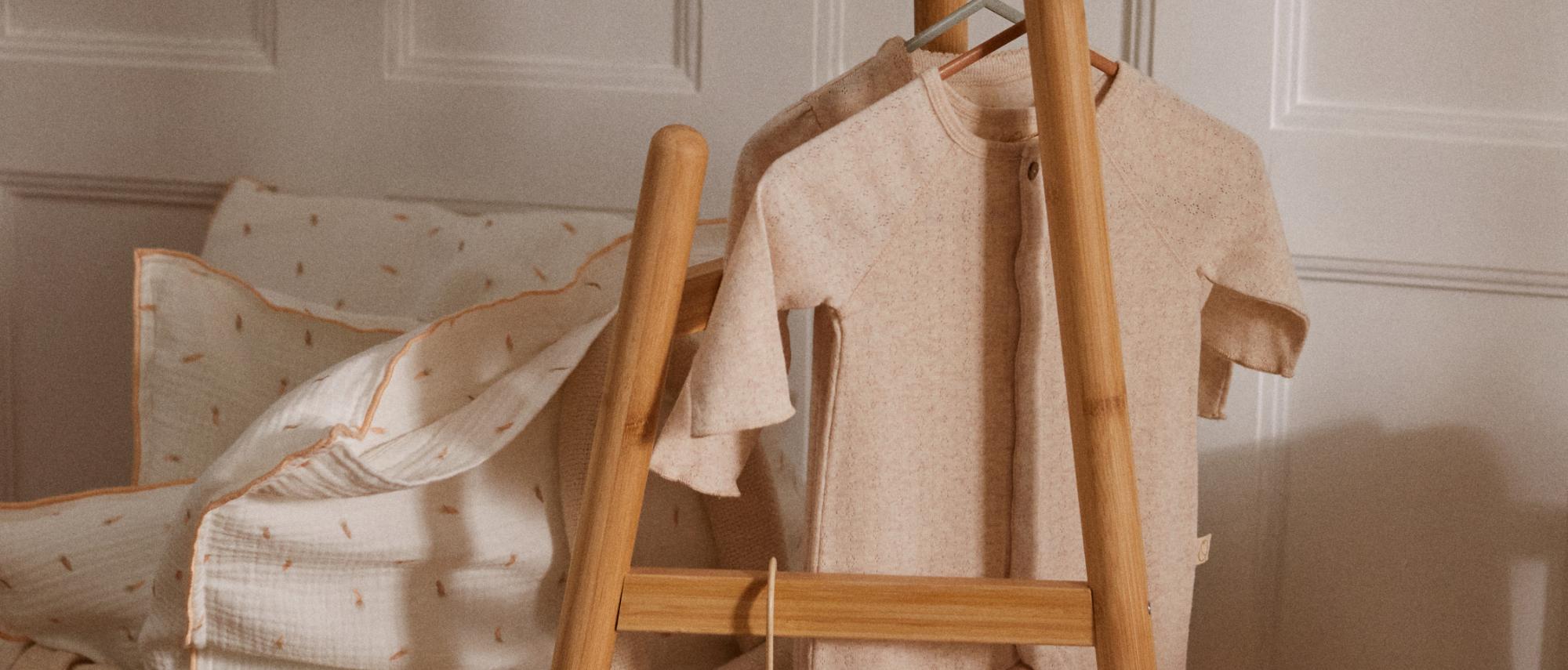
Sleepless, restless nights are every parent’s nightmare! That’s why it’s worth doing everything possible to keep the baby comfortable. Investing in the right baby and newborn pyjamas is one of the best ways to ensure comfortable and peaceful nights of sleep. Baby and newborn pajamas should provide warmth, softness, and security, while also being practical for parents. Among all the options available on the market, let’s explore the best materials, how to make the right choice, and how to maintain them properly.
There are various types of baby and newborn pajamas on the market, each with specific characteristics that can meet different needs for both parents and babies.
One-piece pyjamas are very popular due to their practicality. These baby and newborn pyjamas cover the entire body, from feet to neck, and provide warmth on colder nights. They usually feature zippers or snap buttons, making nappy changes easier during the night.
Two-piece baby and newborn pyjamas consist of a top and trousers. They are ideal for milder climates and allow parents to adjust the baby’s clothing depending on the temperature. This type of baby and newborn pyjamas offers greater versatility when mixing and matching pieces.
Also known as “footies,” these baby and newborn pyjamas are especially useful for keeping the baby’s feet warm, eliminating the need for socks. They are a great option for babies who move around a lot during sleep, ensuring they stay comfortable throughout the night.
Sleeping bags, also known as “sleep sacks,” are an increasingly popular option for baby and newborn pyjamas. Designed to replace loose blankets in the cot, they provide safety by maintaining the baby’s body temperature.
Choosing the right material for baby and newborn pyjamas is crucial for ensuring comfort and protecting delicate skin. The best fabric options for baby and newborn pyjamas are those that are soft, breathable, and hypoallergenic.
Choosing the right baby and newborn pyjamas involves considering several factors, including the climate, the baby’s size, and their specific needs.
One of the main factors to consider for baby and newborn pyjamas is the temperature of the room where the baby sleeps. For cold nights, opt for one-piece pyjamas or sleeping bags made from warmer materials like velvet. For hot climates, go for lightweight fabrics like cotton or bamboo.
Baby and newborn pyjamas should fit well - not too tight or too loose. Pyjamas that are too tight can restrict movement and cause discomfort, while those that are too loose can pose safety risks. It’s best to check the size charts provided by manufacturers and always choose a size that allows room for growth.
To make parents’ lives easier, baby and newborn pyjamas should have zippers or snap buttons, especially in one-piece designs. These fasteners make nappy changes during the night easier, allowing the baby to fall back asleep quickly.
Make sure the baby and newborn pyjamas you purchase are safe. Avoid garments with cords or loose parts that could pose a choking hazard. Also, check if the pyjamas are made from flame-resistant materials, especially if they will be used near heaters.

To keep baby and newborn pyjamas comfortable and safe, they need to be in good condition. This can be achieved with a few care and maintenance steps.
The first thing to do is wash baby and newborn pyjamas before their first use. This ensures the removal of any chemicals used during manufacturing and transport.
Whenever washing baby and newborn pyjamas, use a mild and hypoallergenic detergent to prevent skin irritation.
Before washing baby and newborn pyjamas, always check the care labels for specific instructions. Most cotton and bamboo pyjamas can be machine-washed, but fabrics like merino wool may require hand washing or delicate cycles.
During the washing process, avoid excessive use of fabric softeners. While they make clothes soft, fabric softeners can reduce the absorbency of some fabrics and cause irritation on sensitive skin.
When drying, air-dry baby and newborn pyjamas outside and in the shade whenever possible to preserve the colours. High heat from tumble dryers can damage delicate fabrics and shorten the lifespan of the garments.
Finally, to keep the fabrics in good condition and ready for use, store pyjamas in dry, well-ventilated places, away from direct sunlight.
As we mentioned at the beginning, sleepless, restless nights are every parent’s nightmare. To minimise this, carefully chosen pyjamas can turn from simple garments into allies in achieving peaceful nights. By knowing you’ve made the best choice to provide your baby with serene nights and restful sleep, parents can also relax and enjoy that tranquillity.